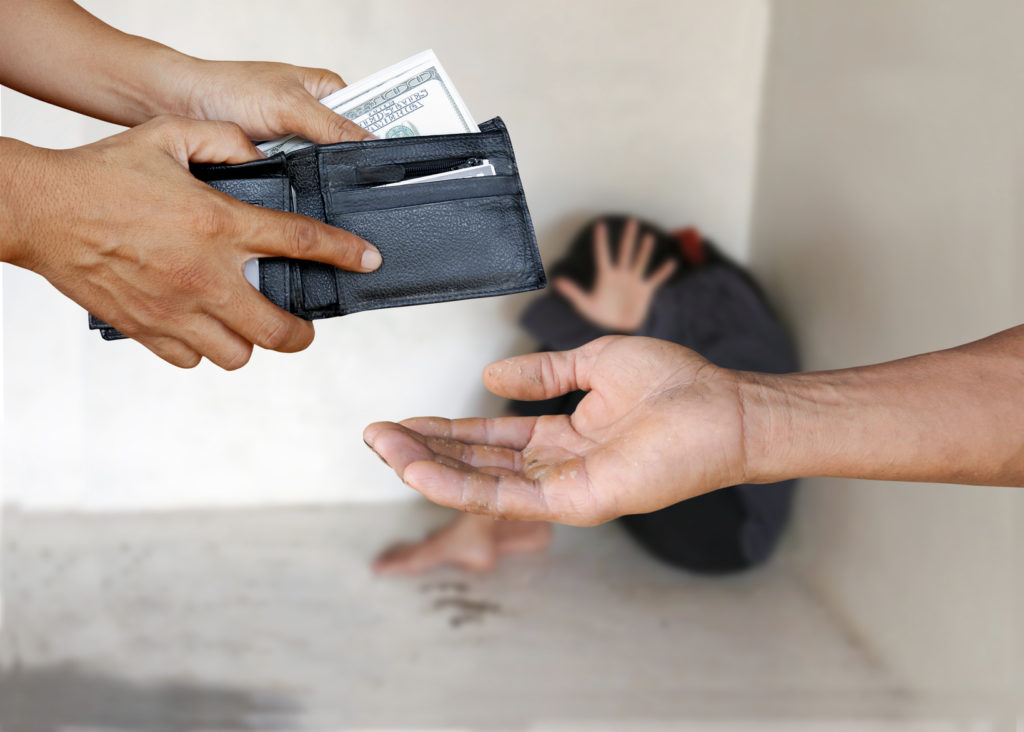Human trafficking is a growing concern not just in the United States but in the entire world. Often times, public perception is that slave labor is primarily a major issue in developing countries. However, the reality is there is a gradual trend in our own American backyard: an increasingly large number of foster kids being sex trafficked. Commercial Sexual Exploitation of Children (CSEC) is the most common form of human trafficking in America and runaway and homeless youth, namely foster kids, are its primary victims.
The Victims of Trafficking and Violence Protection Act of 2000 defines sex trafficking as inducing any child under the age of 18 to engage in commercial sex. The National Center for Missing and Exploited Children (NCMEC) estimates that one in six endangered runaways were likely to be sex trafficking victims in 2014. In 2013, it was one in seven.
However, no matter how harrowing these statistics may be, it is believed the actual numbers are likely worse.
Why? Because it’s challenging to identify victims, collect and cross-reference data. Additionally, many young people do not see themselves as victims or will not admit to it due a fear of retribution, such as deportation, jail or death.
Children in foster care are at a higher risk of being trafficked because of their background of abuse and neglect. It has been documented that many young people who are trafficked have been directly involved with the child welfare system.
According to an article in the Huffington Post in 2013, 60 percent of the child sex trafficking victims who were recovered as part of a FBI nationwide raid in more than 70 cities were children from foster care or group homes.
There are three major contributing factors that play a role in why foster children become victims:
• Force – The use of violence to control young people
• Fraud – Making empty promises of love and prosperity to young people
• Coercion – The use of threat and intimidation against young people
Homelessness and drug addiction go hand in hand in trapping foster children into the sex trafficking trade.
Based on reports submitted to the Adoption and Foster Care Analysis and Reporting System (AFCARS) in 2013, state agencies nationwide reported that 4,550 kids in foster care were runaways. A majority of them were between the ages of 12 and 17.
Sex traffickers use tactics like getting children addicted to drugs to hold them captive in the sex trade.
Unfortunately, kids don’t have to run away to become victims. Children can also be trafficked by the people who are supposed to be shielding them from harm.
In Ohio, a mother was sentenced to 51 years in prison for selling her 11-year-old daughter in exchange for heroin – and videotaping the sexual acts. Following the heinous sexual act, the child was forced to take heroin as a “reward.”
Sex trafficking takes many forms, including street prostitution, online escort services and pornography – and girls aren’t the only victims.
A group in Texas, called the Liberty Task Force, is fighting the perception that sex trafficking only happens to girls. Boys are victims as well, and this nonprofit not only brings awareness to this fact but also offers resources to help.
In New Jersey, Foster and Adoptive Family Services (FAFS) offers an online course to licensed resource parents that is designed to help determine whether the child in your care is being sex trafficked called Human Trafficking. It defines what human trafficking is in detail, including sex trafficking, as well as highlights warning signs and ways to help children in care.
For example, some signs that may indicate your child in care might be a victim of sex trafficking are running away, disappearing for an extended amount of time, receiving expensive gifts and having unexplained injuries.
If your foster child exhibits these signs, or any behavior that may point toward involvement in sex trafficking, contact her caseworker immediately.
The Child Welfare Information Gateway has important information on all efforts to address trafficking and gives access to resources for victims.
If you suspect someone is a victim of sex trafficking, you can report it to the National Human Trafficking Hotline at 1.888.373.7888 or you can text INFO or HELP to BeFree (233733).


I’ve actually known and lived with several people that that’s happened to . ( I’m in foster care)
Racheal i am trying to learn more about and raise awareness. Would you mind sharing your story(s)
Pingback: Sex Trafficked Foster Kids – Original Sin; The Genesis of Eve
Pingback: Foster Care and Sex Trafficking: What you need to know – Healthy Lifestyle Mama